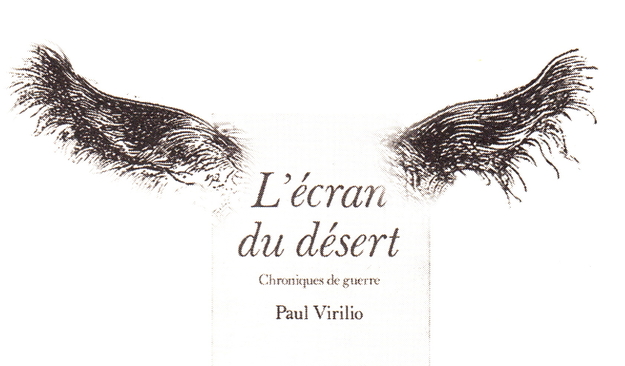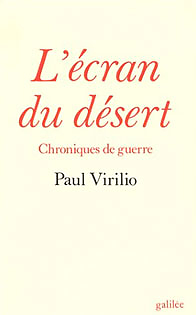This period, in which the UN unexpectedly won back their moral authority without achieving any concrete results, was necessary to move espionage and other satellites, until then hovering over the Soviet Union, to the Gulf region. The complete profile of the possible areas the allied cruise missiles could cover, from launching site to target, was filed on their hard discs: until then, those areas had been the countries and cities of the former Eastern bloc. The observation satellites – which can chart an area accurately to within a metre, or possibly even 30 cm – provided the material for the reprogramming of the cruise missiles for the Iraqi battle ground. And very successfully: 51 of the 52 cruise missiles launched hit their targets accurately to within 30 cm, after having been launched from a distance of 1300 km. From January 1991, the satellites and awac aircraft were ready for operational use as well.
These could not only scan, and listen in to, all Iraqi radio traffic, but could also disturb these communications - including all radar frequencies. According to Virilio, Iraq had been made completely visible, and the allied forces practically invisible, even before the first bomb had fallen.
This strategy as a whole is united in the Stealth bombers: themselves invisible to ground-radar until it is too late, they release intelligent ammunition, which can see exactly the target it is meant for (because the object is 'locked' from the aircraft by means of a laser beam).
Desert Storm, phase II, began with the destruction of the communication centres in Baghdad and continued with the systematic demolition of everything that could be of importance to Iraq's information and ammunition transport. We made them blind first, Schwarzkopf would summarize later.
The allied actions were coordinated, almost in real time, from the C3I command centre under the Pentagon in Washington, where all information from aircraft, satellites and other observation machinery came in via satellite and was analysed, to result in new orders for the front. (A striking example in this context was the Scud-Patriot reaction.) The weapons of destruction, concludes Virilio, have been outclassed in strategic importance by the communication weapons: these make friendly material invisible, and the enemy's machinery utterly transparent, and If you are visible, you are lost.
However, Iraq reacted by making itself invisible in turn, this time not to the enemy (ground, air and naval) troops, as was still the case with traditional camouflage, but invisible from the air. Certainly the most shocking measure within this counter-strategy was the Iraqis' setting fire to the oil wells in Kuwait, in order to create a dark night which this time would be absolutely impenetrable. Long after the Gulf War is over – Virilio writes, referring to this ecological warfare – we will still be hearing front-line news, but this time in the form of weather reports.
This strategy of destruction/control of enemy communications could also be recognised in the approach of the civil media. The Pentagon-controlled video pool was the source of the images we received. This war, which initially – against the background of the Romanian revolution – promised to become the first live-war, turned into a war without images. What we were offered on the screen were non-committal press conferences and fragmented video games.
Otherwise, says Virilio, we will have to concede Saddam Hussein his victory insomuch that he managed to make one essential aspect thoroughly invisible: the damage caused by the allied bombardments. After every raid it turned out that there were still enough aircraft, helicopters, anti-aircraft artillery and Scuds left.
Desert Screen, the present phase, means: the strategic developments that the Gulf War has allowed us to observe are exactly the same as those taking place in the civil sector, that is, the global village. In the same way as a general might just as well stay at home to lead his actions in the field, the television viewer, too, can carry out all his activities from his living room. All information comes together in the desert of the screen at home, the pole of inertia.
Remote vision, yesterday's television, is being replaced by remote activities, today's and tomorrow's tele-action, from tele-shopping and home-banking to tele-conference and tele-tourism in virtual reality.
The only thing is, Virilio adds with concern, that we now know what communication weapons are aiming at: blinding the other and making yourself invisible.
What is the value of information if it reaches the public at the same speed as it reaches the journalists, without even a second to spare to mature into news. The news which reaches us as information via the communication weapons of radio and tv might at any time be des-information. If information is a weapon, des-information is the armour against it. The television viewer cannot trust his eyes anymore. And – Virilio has been warning us for many years now – if that is the case, the world as we know it will disappear. The distrust in the mass media is beginning to take on alarming proportions.
Indeed, l'Écran du Désert revolves around one central question: Is it possible to democratise the ubiquity and the immediateness (of the media), in other words: can inertia be democratised? Is democracy possible without the categories of truth and lie, which have already been replaced by those of the 'actual' and the 'virtual'? No unintelligent question, it would seem, so long as no new definition or practice of democracy, in agreement with the state-of-the art of the new media, has been found.
l'Écran du Désert is a curious book. Indeed, Virilio has been honest enough to incorporate, unmodified, all the articles he wrote for a number of European newspapers during the Gulf crisis and War. The book therefore includes all the times when he himself became the victim of des-information (but you never know, after all). This makes the book distinctly exiting.
On the other hand, his theoretical tools enable him to keep just that bit of distance necessary to make him perceive with bewilderment that a number of his early predictions have come true. (One of the most striking examples, it would seem, is that, long before the Gulf crisis arose, he had predicted, in a unpublished article on the French-Libyan troubles in Chad, that the only place where a world war could still be waged is the desert). However, it is not pleasant for Virilio either to see his insight proved right, if only because it forces him to repeat himself time and again, in the hope that he will find a way out.
Virilio is at his best when he indulges in (almost enthusiastic) analysis of military strategies, machinations and ways of thinking. When he applies the same insight to the civil sector, he seems less convincing, perhaps because he simply cannot imagine anything other than the kind of democracy which has developed – as an ideal – in the course of the 20th Century. Perhaps there would be a way out of his thinking if we began to ask ourselves the question: is democracy possible without deterrence? Was the Cold War, the bipolar deterrence which is now being replaced by multipolar deterrence, not a condition of existence for democratic thinking? The impression prevails that, to Virilio, the French version of democracy is so much as the end of history, for lack of something better.
Such an attitude can only generate justified concern and a (desire for a) defensive strategy for the survival of history. But would it be true? Is Western democracy the only political model for a pleasant way of life?
translation Olivier/Wylie

